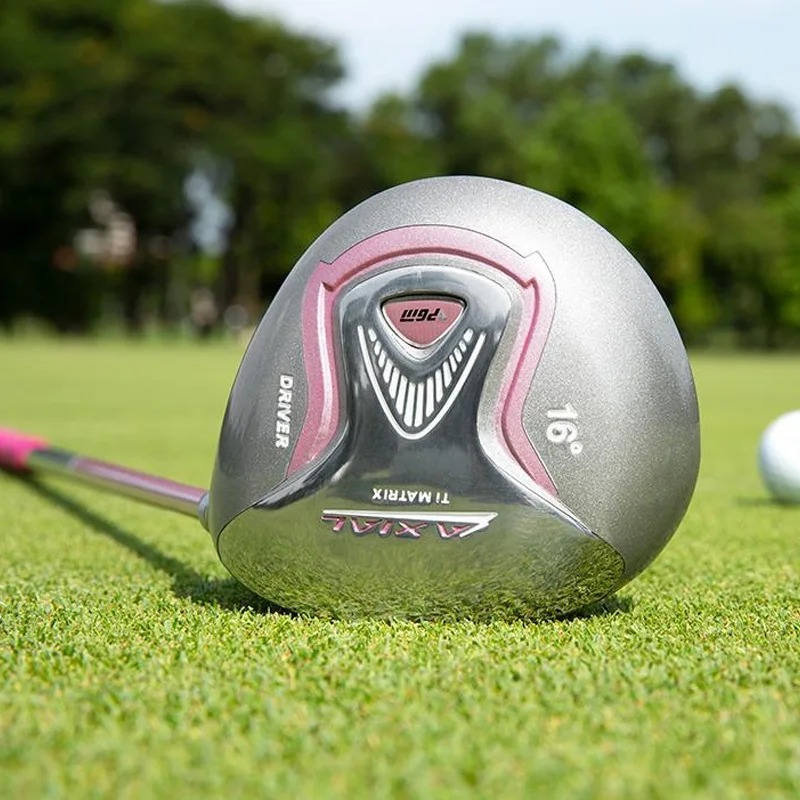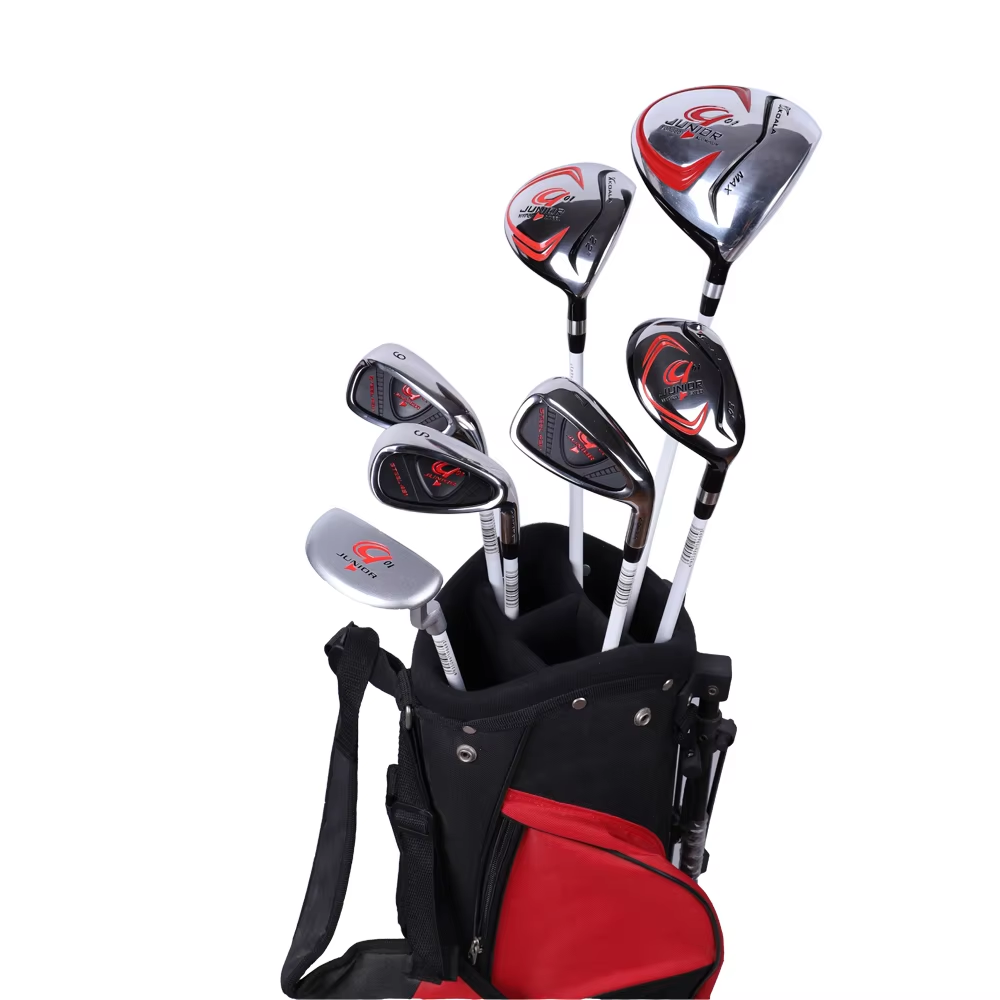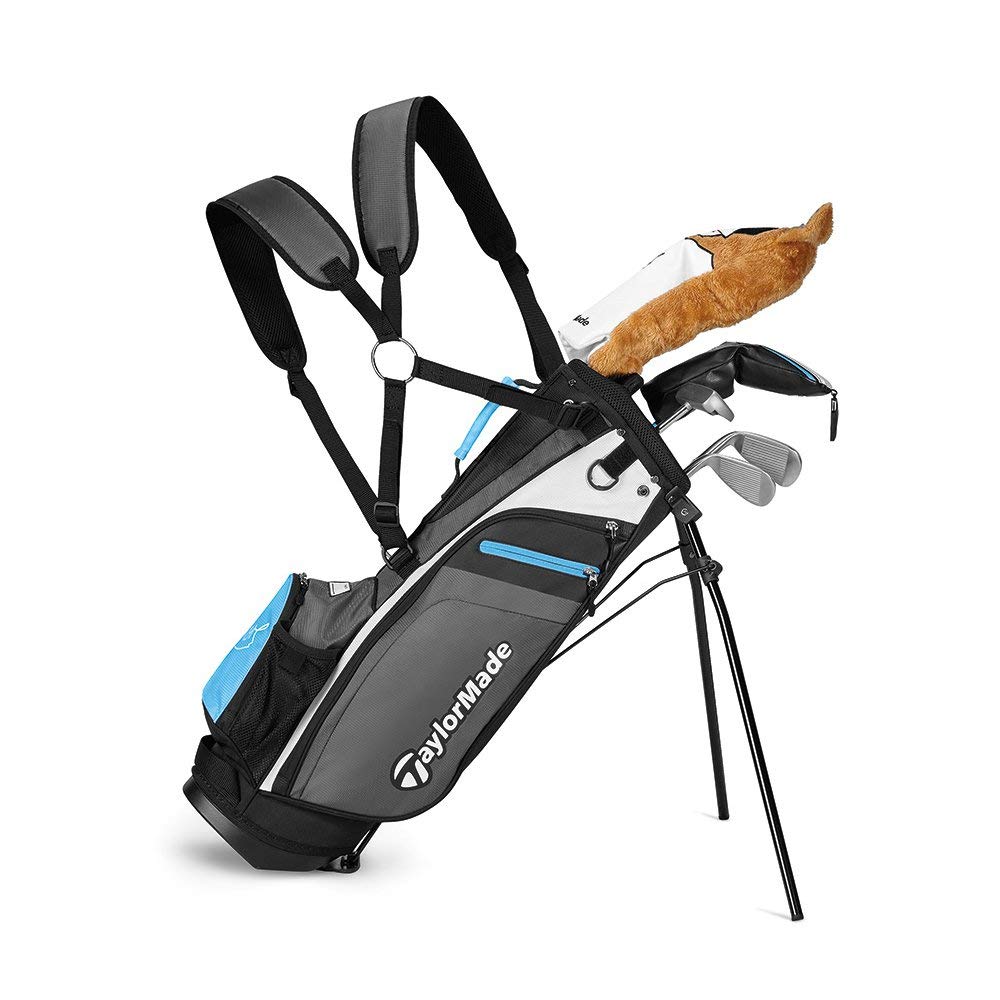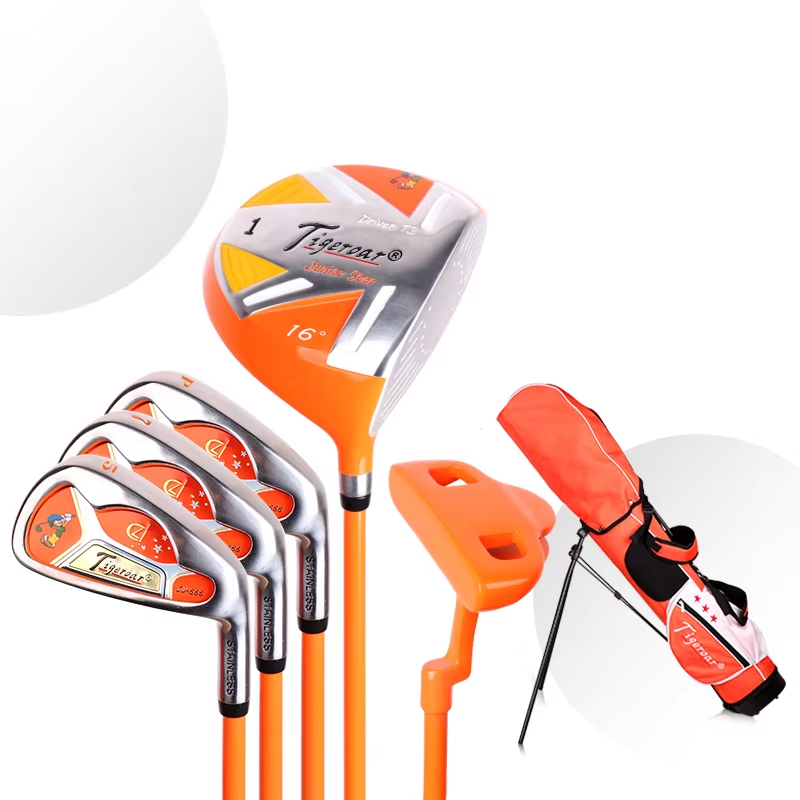Introducing children to golf requires more than just lessons and practice time. It also demands the right equipment. Standard adult clubs are too long, heavy, and difficult for kids to use properly. That’s why junior golf clubs are essential. These specially designed sets match the size, strength, and skill level of young players. With the correct junior golf clubs, children can develop proper swing mechanics and enjoy the game from the start.
Moreover, using age-appropriate gear boosts confidence and reduces frustration. Kids swing faster and make better contact when the club fits their body. This leads to more fun and fewer missed shots. Most junior golf clubs come in various sizes based on height and age. Some even include training aids or colorful designs to keep young minds engaged.
Additionally, starting with the right tools helps build long-term interest in the sport. When children feel successful early, they’re more likely to keep playing. Parents, coaches, and schools all benefit from understanding how to choose quality junior golf clubs. In this article, we’ll explore sizing, types, top brands, safety tips, and how to support a child’s growth through the right equipment.
 Why Junior Clubs Are Designed Differently Than Adult Clubs
Why Junior Clubs Are Designed Differently Than Adult Clubs
Adult golf clubs simply don’t work well for children. They are longer, heavier, and built for full-grown strength. In contrast, junior golf clubs are engineered with young players in mind. Their shafts are shorter and lighter, making them easier to control. This allows kids to maintain balance and posture during swings.
Also, the clubheads on junior golf clubs are often oversized. This increases the sweet spot and improves forgiveness on mishits. Even if a child doesn’t strike the ball perfectly, they still achieve decent distance. This keeps motivation high and frustration low.
Furthermore, grips are smaller and softer. Children have smaller hands, so standard grips would be hard to hold. The reduced diameter lets them wrap fingers fully around the club. As a result, they gain better control and reduce hand fatigue.
Shaft flexibility is another key difference. Junior clubs use more flexible graphite shafts. These absorb shock and help generate clubhead speed. Since kids have slower swing tempos, the extra flex compensates naturally.
Finally, many junior golf clubs feature bright colors and fun themes. Animals, cartoon characters, or team logos make the gear more appealing. A visually engaging set encourages regular use and practice.
All these design changes ensure that junior golf clubs support learning, not hinder it.
How to Choose the Right Size of Junior Clubs by Age and Height
Selecting the correct size is critical when buying junior golf clubs. Clubs that are too long force children to stand too upright. This disrupts their swing and causes inconsistency. On the other hand, clubs that are too short lead to hunching and poor form.
Manufacturers typically categorize junior golf clubs by age and height ranges. For example, sets for ages 3–5 usually fit kids under 42 inches tall. These include one or two clubs, like a putter and a hybrid. They focus on basic skills and coordination.
Kids aged 6–8 often use clubs sized for heights between 43” and 48”. At this stage, they may get three to five clubs. Common choices include a driver, iron, wedge, and putter. Some sets add a fairway wood or hybrid for versatility.
Players aged 9–12 need longer clubs as they grow. Sets for this group cover heights from 49” to 58”. Full seven- to nine-piece sets become common. These prepare young golfers for real course play.
Tweens and teens (ages 13–17) may transition into adult-sized junior clubs. These are nearly full-length but still use lighter materials. Graphite shafts and higher lofts remain important for developing strength.
Always measure your child before purchasing. Stand them barefoot against a wall. Then, check their height and compare it to brand charts. Many retailers offer fitting guides online. Using accurate data ensures your junior golf clubs perform as intended.
 Types of Junior Clubs: Complete Sets vs. Individual Pieces
Types of Junior Clubs: Complete Sets vs. Individual Pieces
There are two main ways to buy junior golf clubs: full sets or individual clubs. Complete sets are ideal for beginners. They include multiple clubs, a bag, and sometimes headcovers. Everything works together in terms of length and weight.
Most starter sets contain 3 to 9 pieces. A typical lineup includes a driver, hybrid, iron, wedge, and putter. Some add a fairway wood or second iron. All clubs are matched for consistent performance.
These sets save money and time. You don’t need to research which models pair well. The manufacturer has already done the work. This makes full junior golf clubs sets perfect for first-time buyers.
On the other hand, individual clubs suit growing players. Once a child masters certain shots, they might want to upgrade specific pieces. For example, replacing a beginner driver with a higher-performance model.
Buying single clubs also helps when only one piece breaks. Instead of replacing the whole set, you fix what’s damaged. This approach offers more flexibility over time.
Some parents mix both strategies. They start with a full junior golf clubs set. Then, they gradually swap out clubs as skills improve. This balances cost and customization.
Ultimately, the best choice depends on experience level and commitment. New players should begin with a complete set. Advanced juniors can explore individual upgrades.
Top Brands Offering High-Quality Junior Clubs
Several trusted brands manufacture reliable junior golf clubs. Callaway leads the market with its Strata Jr. series. These sets feature lightweight graphite shafts and oversized clubheads. They emphasize forgiveness and ease of use. Bright colors also appeal to younger users.
Cobra offers the King Junior line. It includes full sets with modern designs and alignment aids. Their hybrids replace hard-to-hit long irons. This simplifies learning and boosts confidence at impact.
TaylorMade builds performance into youth models. The Burner and Tour Series Jr. lines deliver solid feel and consistent launch. These clubs help serious junior players refine technique.
Wilson Staff provides budget-friendly yet durable options. The Profile Junior set uses cavity-back irons and soft grips. It supports natural swing development without breaking the bank.
Ping’s Tyne Jr. series focuses on precision and balance. While pricier, these clubs offer excellent craftsmanship. They suit intermediate players aiming for tournament play.
Rage Golf creates vibrant, kid-friendly designs. Their clubs come in fun colors and patterns. This makes practice sessions more exciting. Rage also uses flexible shafts for smooth swings.
Honma and Tour Edge round out the selection. Honma blends luxury with youth functionality. Tour Edge applies AI-driven design to maximize ball speed.
Each brand tailors its junior golf clubs to different needs. Reading reviews and testing clubs can help identify the best fit. Always consider durability, comfort, and growth potential.
 Safety and Performance Benefits of Using Proper Junior Clubs
Safety and Performance Benefits of Using Proper Junior Clubs
Using correctly sized junior golf clubs improves both safety and performance. Ill-fitting adult clubs increase injury risk. Kids strain muscles trying to swing heavy, stiff shafts. Over time, this leads to joint pain or bad habits.
In contrast, junior golf clubs reduce physical stress. Lightweight materials allow natural motion. Children swing smoothly without overexertion. This protects shoulders, elbows, and wrists during development.
Properly balanced clubs also enhance control. Kids avoid jerky, uncontrolled movements. They learn tempo and rhythm from the start. This builds muscle memory for future success.
Performance improves quickly when equipment matches ability. Young players hit the ball farther and straighter. Clean contact becomes more frequent. Immediate results boost motivation and engagement.
Also, good clubs reduce frustration. Fewer shanks, topped shots, or slices mean less discouragement. Practice stays positive and productive. Coaches find it easier to teach fundamentals.
Many junior golf clubs include visual aids. Alignment lines or colored markings guide setup. These small features make a big difference in learning speed.
Overall, investing in safe, well-designed junior golf clubs pays off in long-term enjoyment and skill growth.
How to Maintain and Care for Junior Clubs
Taking care of junior golf clubs extends their life and performance. After each use, wipe down the clubheads with a damp cloth. Remove dirt, grass, and moisture. This prevents rust and buildup.
Check the grips regularly. Over time, they wear out or become slippery. Replace them every 6–12 months depending on use. Clean grips with mild soap and water to restore tackiness.
Inspect the shafts for dents or cracks. Junior clubs often get dropped or leaned against hard surfaces. Damage weakens the structure. Stop using any club with visible flaws.
Store the clubs in a dry place. Avoid leaving them in hot cars or wet garages. Extreme heat warps shafts. Moisture damages grips and ferrules.
Use headcovers for woods and drivers. These protect clubheads from scratches and dings. Encourage kids to put them on after every shot.
Keep the bag off the ground when possible. Dirt and water can seep into pockets. Use a stand bag or cart for cleaner storage.
Teach children how to handle their junior golf clubs responsibly. Respect for equipment builds discipline. It also reduces accidental damage.
With proper care, a set of junior golf clubs can last through several growth stages. Some families pass them down to younger siblings.
 Frequently Asked Questions About Junior Clubs
Frequently Asked Questions About Junior Clubs
At what age should a child start using junior golf clubs?
Most kids begin between ages 3 and 6. Start with one or two clubs based on height and coordination.
Can adults use junior golf clubs for practice?
Only temporarily. They are too short and light for adult biomechanics. Not recommended for regular use.
How do I know when my child needs new junior golf clubs?
When they’ve grown 4+ inches or struggle with swing mechanics. Outgrown clubs limit progress.
Are left-handed junior golf clubs available?
Yes, major brands offer left-handed sets. Check product listings before ordering.
Should I buy used junior golf clubs?
Only if inspected for damage. Worn grooves or bent shafts affect performance. New sets come with warranties.
Do junior golf clubs include a bag?
Most complete sets do. Look for padded straps and multiple compartments for convenience.
Can my child use adult clubs if they’re tall?
Not until their strength and swing speed match adult levels. Stick with junior specs for safety.
How long do junior golf clubs last?
Typically 1–3 years, depending on growth and usage. Upgrade as needed for optimal fit.
 Final Thoughts: Why Investing in Quality Junior Clubs Matters
Final Thoughts: Why Investing in Quality Junior Clubs Matters
Choosing the right junior golf clubs sets the foundation for a lifelong love of golf. When children use gear that fits their size and skill, they succeed more often. Success leads to confidence, practice, and improvement.
Moreover, modern junior clubs combine safety, performance, and fun. They support healthy development and reduce injury risks. With so many quality options available, finding the right set is easier than ever.
As kids grow, their needs change. Starting with a proper junior golf clubs set allows smooth progression. Parents can upgrade gradually as height and strength increase.
In conclusion, never underestimate the impact of well-matched equipment. The right junior golf clubs don’t just improve shots—they inspire joy, discipline, and achievement. Give your young golfer the best start possible with a set built just for them.